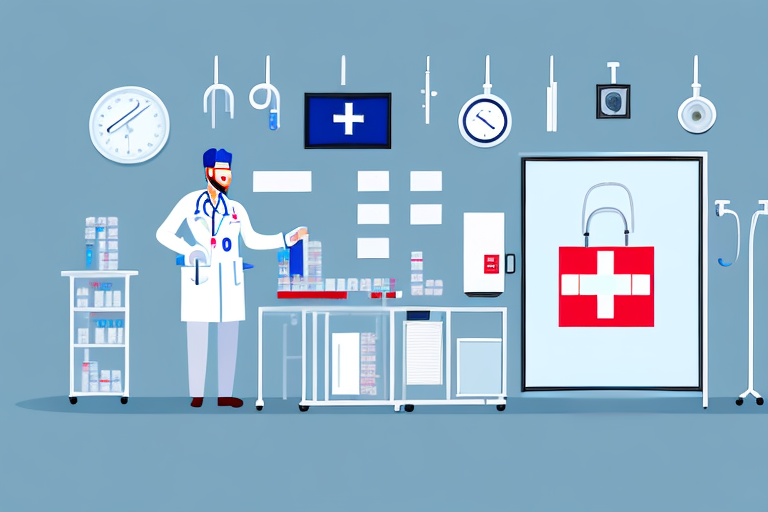Introduction to Safe Blood Transportation in Healthcare
Blood transportation is a critical component of healthcare delivery, requiring precision, care, and stringent protocols. From transfusions to laboratory testing, the safe handling and transport of blood samples are essential for the effective functioning of medical facilities. This article delves into the significance of safe blood transportation, the associated risks, and the best practices that ensure the integrity and safety of blood samples throughout the transportation process.
The Importance of Safe Blood Transportation
Ensuring Quality Healthcare Delivery
Safe blood transportation is vital for providing quality healthcare services. It ensures that blood transfusions are available for patients in need, supports accurate laboratory testing, and aids in the diagnosis and treatment of life-threatening conditions. Maintaining the correct temperature, using appropriate packaging, and proper labeling are crucial for sustaining the viability of blood samples, thereby minimizing the risk of adverse events and ensuring high-quality patient care.
Supporting Blood Banks and Donation Centers
Beyond clinical settings, safe transportation is equally important for blood banks and donation centers. Proper handling during transport preserves the safety and efficacy of donated blood, ensuring its availability for transfusions. According to the World Health Organization, maintaining the integrity of blood products during transportation is essential for preventing transfusion-related complications.
Risks and Challenges in Blood Transportation
Potential for Contamination and Degradation
Transporting blood samples in unsuitable environments can lead to contamination, resulting in inaccurate test results or patient harm. Exposure to incorrect temperatures can cause blood samples to degrade, rendering them unusable for testing or transfusion. These risks highlight the need for meticulous protocols and advanced transportation solutions.
Mitigation Strategies
To address these risks, medical facilities employ specialized containers equipped with temperature sensors and tracking devices. Implementing clear protocols for handling and storage further minimizes the potential for errors and accidents. Adhering to these strategies ensures the safety and reliability of blood transportation.
Best Practices for Handling and Transporting Blood Samples
Use of Specialized Containers
Blood samples should be transported in containers that maintain the appropriate temperature and prevent contamination. These containers are often sterilized between uses and include features such as absorbent materials to prevent leaks. Proper labeling is essential, indicating the contents, patient information, and collection details.
Staff Training and Protocols
Comprehensive training programs for medical staff are crucial. Staff should be trained in proper handling techniques, emergency response procedures, and the use of transportation equipment. Establishing clear protocols ensures consistency and reduces the likelihood of transport-related errors.
Secure Packaging and Transportation
Ensuring that blood samples are securely packaged and transported reduces the risk of damage and contamination. Utilizing locked containers and employing courier services with reliable tracking systems can enhance the security and traceability of blood samples during transit.
Technological Innovations Enhancing Blood Transportation
Advanced Temperature Monitoring Systems
Modern temperature monitoring systems, including digital data loggers and RFID-enabled sensors, provide real-time tracking of blood sample conditions. These technologies alert healthcare professionals to any deviations from optimal temperatures, allowing for immediate corrective actions.
GPS and Tracking Technologies
GPS tracking offers enhanced visibility over the transportation process, ensuring that blood samples reach their destinations promptly and safely. These technologies also facilitate the management of logistical challenges, such as route optimization and timely delivery.
Regulatory and Economic Considerations
Adherence to Regulatory Standards
Compliance with regulatory requirements is paramount for safe blood transportation. Regulations vary by location but generally aim to standardize transportation protocols to ensure safety and reliability. Adhering to these standards helps medical facilities maintain high-quality services and avoid legal complications.
Economic Impact of Unsafe Transportation
Unsafe blood transportation can lead to significant economic losses for medical facilities. Costs associated with wasted blood products, emergency replacements, and delays in medical procedures can be substantial. Investing in safe transportation practices is not only critical for patient safety but also economically beneficial for healthcare institutions.
The Future of Blood Transportation in Healthcare
Emerging Technologies and Innovations
The future of blood transportation lies in the integration of advanced technologies such as blockchain for enhanced traceability and artificial intelligence for predictive logistics. These innovations promise increased transparency, accountability, and efficiency in the blood transportation process.
Collaborations with Third-Party Logistics Providers
Partnering with specialized third-party logistics providers can further enhance the safety and efficiency of blood transportation. These providers offer expertise in temperature-controlled shipments, real-time tracking, and secure handling, ensuring that blood samples are transported under optimal conditions.
Conclusion
Safe blood transportation is a cornerstone of effective healthcare delivery, ensuring that blood transfusions and laboratory tests are performed accurately and reliably. By implementing best practices, leveraging technological advancements, and adhering to regulatory standards, medical facilities can mitigate risks and enhance the safety of blood transportation. Ongoing training, investment in innovative solutions, and strategic collaborations are essential for maintaining the highest standards of blood transportation, ultimately leading to improved patient outcomes and healthcare efficiency.






















